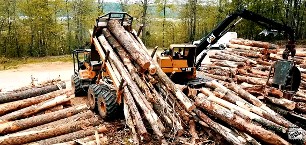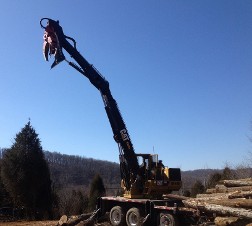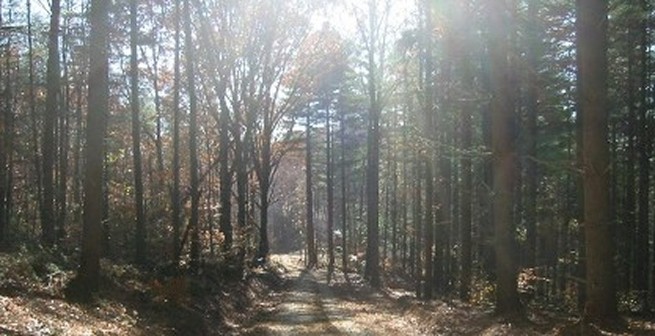Phil Etienne's Logging
What to expect from a harvest...
Woodlots are managed for timber, wildlife, water quality, recreation, retirement funds, college funds, and a host of specific goals. Each landowner chooses the time to harvest and the specific approach to benefit their long term goals. Professional assistance is readily available to walk your timber and make decisions for a select cut. Before logging begins a harvest plan is developed with the landowner.
During our logging operation we keep impact as minimal as possible as some pretty important folks will be watching.

Most of our logging is done using two feller bunchers. One is wheeled while the other is on tracks. This new way of mechanical logging allows us options based on forest terrain and weather conditions to allow for minimal forest disruption.

After a tree is cut and topped the skidder or truck (Tiny) will bring it to the yard. At the yard an automatic slasher saw manufactures the trees into logs from 6-16 feet in length. The operator cuts for grade utilization as well as product utilization. He is always communicating with the lumber inspectors at the sawmill to guarantee maximum log utilization. Maximum yield at the saw insures top dollar being paid to the landowner for their timber.

The yard operator also loads the trucks for transportation to the sawmill. At the mill logs are sorted and sawn by specie and grade.

While this process of harvest and manufacturing has been going on, the final step of site closure is proceeding in the woodlot. The cutter operators and skidder operators took care of the remaining crop trees during harvest and now that the logging disturbance is finished, the soil must be stabilized. There has been an on going process of smoothing skid trails in finished areas and installing erosion preventing water bars in areas where the harvest was completed, but now it is time to close out the job. Water bars are dirt diversions on steep inclines channeling water out of the trails and onto the leaf litter of the forest floor to prevent erosion and protect water quality.
As the last trees are processed and transported to the sawmill, the skidders remove tops from fields or major streams. Sometimes yards are seeded and strawed and sometimes a little rock is used to top dress a road. Each site is different and may vary a little at closure.

Managed woodlots are healthier and more vigorous than non-harvest woodlots. In a world of limited resources wood is the best environmental choice. We don't have to wait for a dinosaur to die to create fuel. We don't have to experience a huge catastrophic event to move tons of rock to create coal or ore. We just have to harvest wisely.








